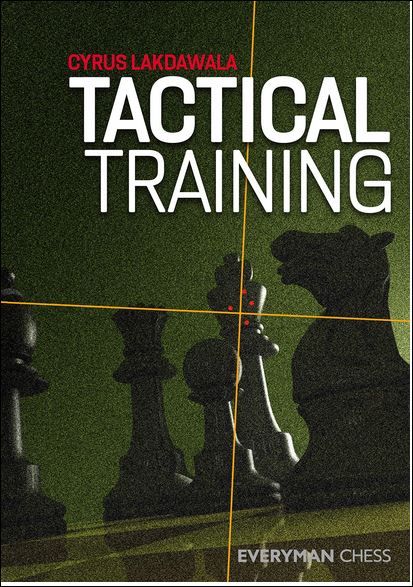
I was in the middle of writing the review of this book, and I found this funny story from the “History of Soviet chess” translation is from Russian, please be understanding!
“Once it was the audience that helped Grandmaster Vladimir Simagin (1919-1968) find out if he made a mistake with a pawn or sacrificed him. A round of the USSR Championship was underway. Considering options for the opponent’s move, Simagin suddenly realized he was losing an important pawn. With a depressed mood, he sat waiting for the inevitable punishment. Suddenly, applause came from the auditorium, which became stronger.
′′ Someone is making a combination “, Simagin thought and looked at demo panels, but there everything was calm. Suddenly, an emotional exclamation from some fan was heard:
– Bravo Volodya!
The great master stepped into his position. Oh miracle! Turns out the pawn can’t be captured due to a forced checkmate, and if it’s not captured, then it’s mate too!
So Simagin won the game he was going to give up.”
This is the position Simagin missed, if you can’t see what Black should play to win, I’ll post the solution at the end of the review.

Chess is a struggle within us, and outside us.
The book begins with 3 very interesting questions:
If the goddess Caissa granted you the choice, which would you pick?
- perfect knowledge of openings?
- Perfect strategic understanding
- Perfect vision to spot and accurately calculate tactics and combinations
The author says 3 is the perfect choice. Yet some chess players could argue matters in chess are never Black and White, and solved by one size fits all.
For example a position similar to the following, happened between two doctors at work, and they asked my opinion on how to continue because they knew I’m a better player than them.

The answer I gave, since it was a pawn endgame, was to activate the king. Now as human if I also had perfect vision to spot tactics and combinations, this case would not have helped me, because there are no tactics or combinations, one needs to know some endgame laws like triangulation, opposition, shouldering the enemy king, zugzwang, etc. to make the right decision. In this case as human I’ve been taught that the king in the middlegame cannot be exposed because the big pieces could checkmate it (obviously Steinitz would disagree… but luckily he is dead!), but in the endgame, it can become a force difficult to reckon with.
You can take any middlegame position in which there are no imbalances, no weaknesses, symmetrical pawn structure, and then you need to decide what to play, perfect combination and tactics will simply not help you. And if your pieces are uncoordinated, passive or on bad squares, you will just see the perfect combination coming at you, and die while watching it executed!
We need to be more rounded players, good in all phases of the game, if we really care about chess improvement.
At the same time I do agree with the author, today’s amateurs have the wrong idea of learning chess. Many opening courses teach lines which are 15-20 moves long, but in an Open tournament in the class U1800 most of the time by move 5 they are out of theory. And we have seen openings from the past which were despised and given a bad evaluation, to be resurrected thanks to engines. Yet, we do need an opening repertoire, and one cannot really re-invent the wheel every game, because it costs a lot of time, and with modern time controls, time is also an important factor of a chess game.
Few years ago there was an amateur which reached a rating of 2000, and won a section in the World Open just studying tactical patterns. Or at least this is what he said he did, and wrote the book De Lamaza method on.

Today we have a wealth of opportunities about tactical training online which is simply astounding.
Yet many still miss simple tactics. Hence the need of books like this one which give the reader a basic proficiency in all types of tactical patterns.

Anna Muzychuk a women’s world champion also mentioned in an interview when doing tactical training is important to have new materials to study. Likely to become aware of new tactical patterns, as well as keeping in our minds patterns we don’t see often.
Coming to reviewing the book:
Chapter 1 begins showing a very simple checkmate pattern, which I happened in one of my games, against a player who was at least 200 points rated above me.

White to move, as you can see I’ve put arrows of what the knight controls and what the queen should do, is just missing the final checkmate move, which I believe everyone can imagine by now.

In this position White to play and force a mate in 5 moves at most!
A total of 33 various mating pattern can be found in chapter 1. This is true also for chapter 2, all these mating patterns come from games or studies. The games are not played between unknown players, but also the top of every age, so it’s possible to see the names of top players like Tal, Bronstein, Carlsen, etc. mating other chess professionals who have written extensively on the game too, like Koblencs, Nimzowitsch, Marshall etc.
For Chapter 2, I’d like to give the reader few positions to solve. The solution will be given at the end of the review, solve the positions, write them down and check your solution at the end of the article!
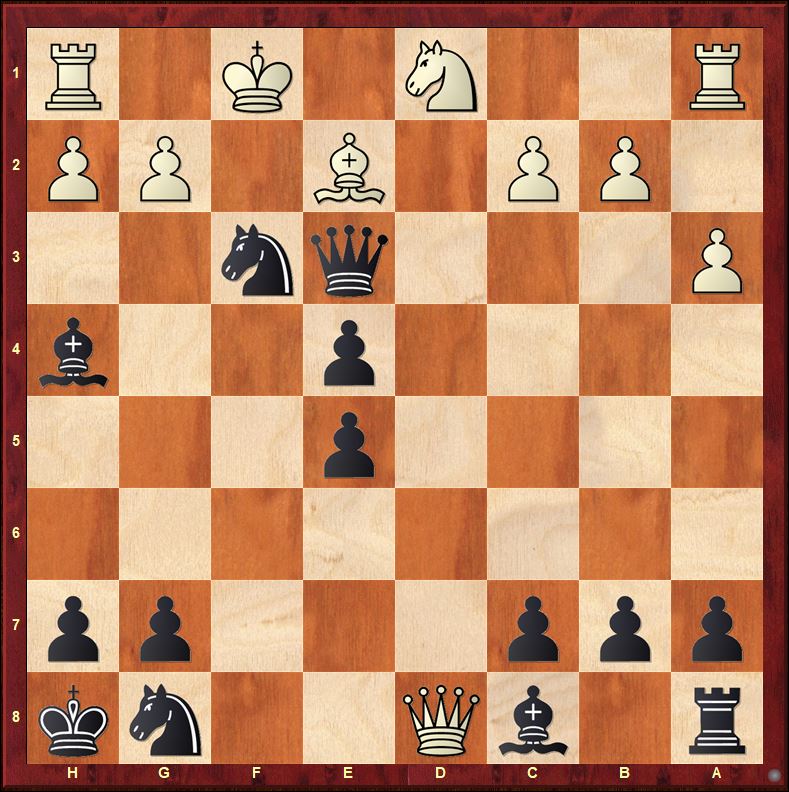
Diagram 34: Black to move and win.
By the way, I’d like to reiterate the importance of having the diagram oriented from the side which has to move. When I was watching this diagram in the book, I had difficulties to solve it, when I put it on the computer from Black’s side I solved it in 2 seconds.

Diagram 35: Black to move and mate.
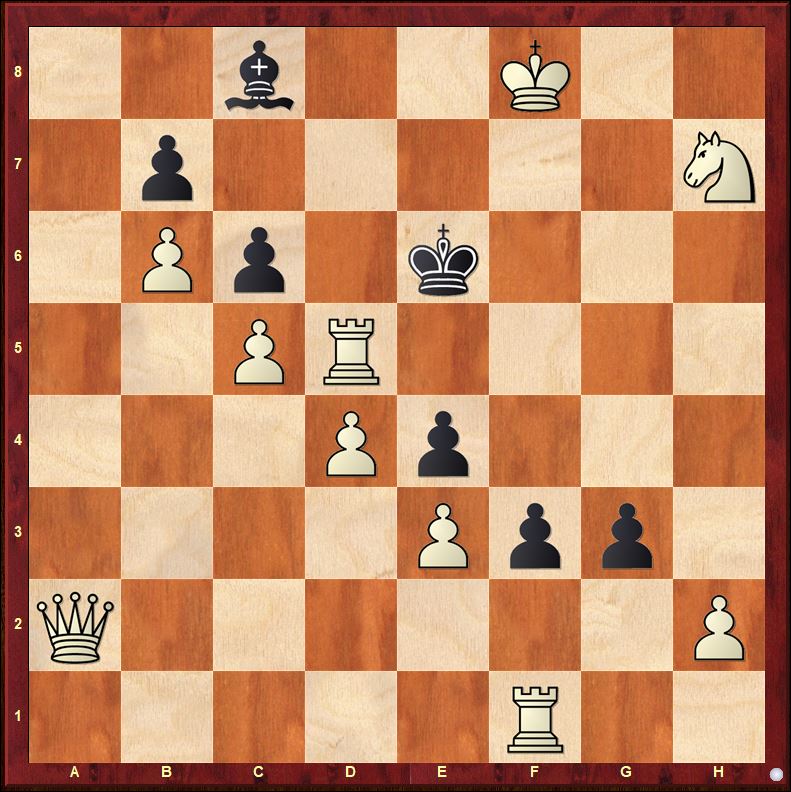
Diagram 37: White to checkmate in 2 moves. This is a beautiful mate problem.
Chapter 3 is on longer mates, many of these mates are patterns one should know. I have seen them in practice and I was spared from losing sometimes, because the opponent didn’t know there was a checkmate. There are a total of 64 mates in this chapter.
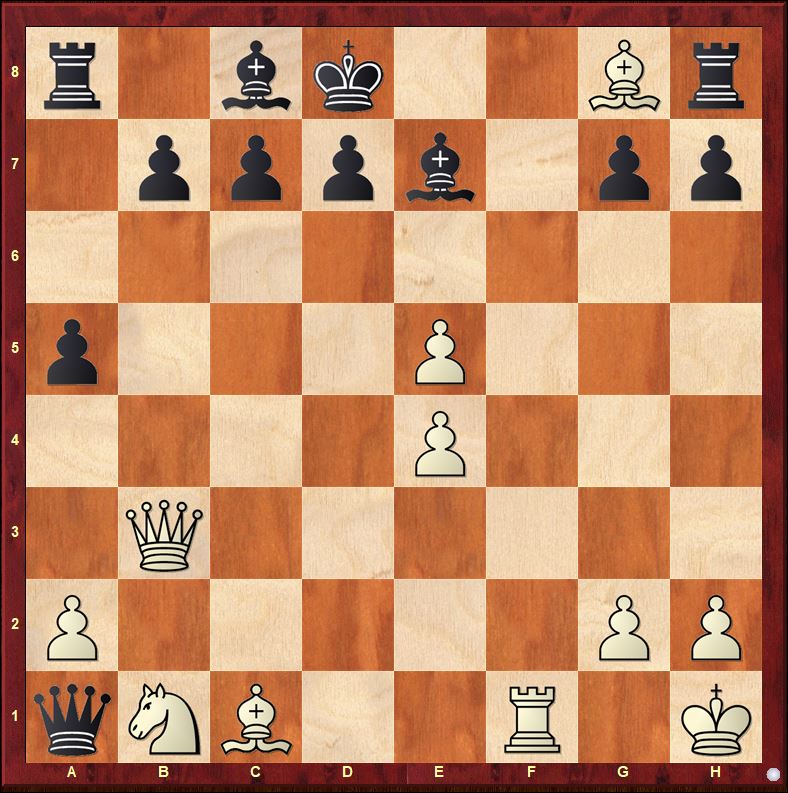
Diagram 113 – Would you believe this game was played by Napoleon Bonaparte? White to play and give checkmate in 5 moves.
Some players don’t like studies, because they cannot visualize till the end, but often in a study one just needs to understand the idea, to connect through space and time with the soul of the composer, a smile will be the end result. This study by Rinck from 1917 is just that.
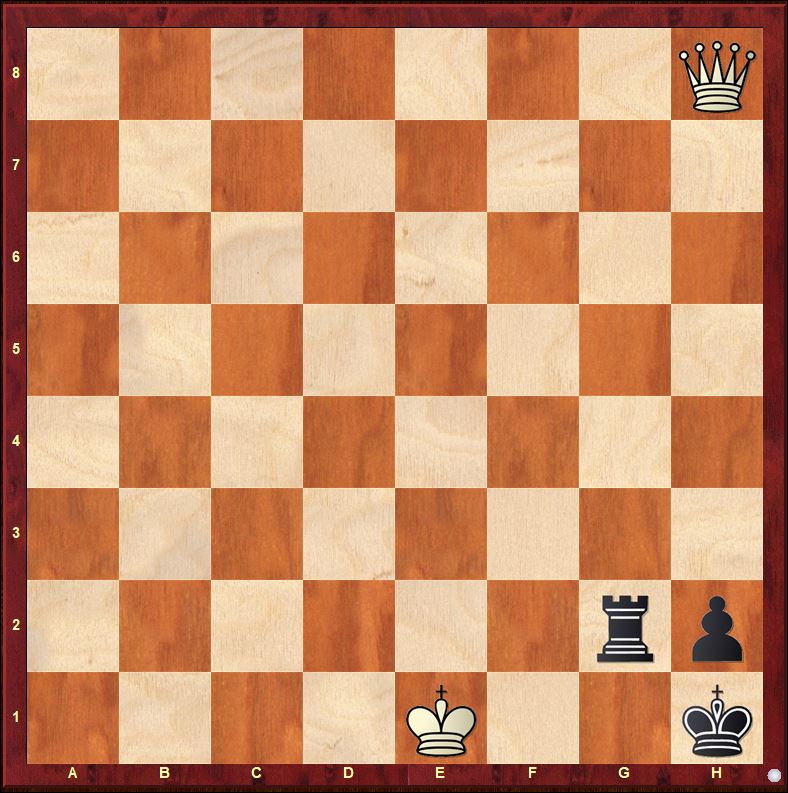
The solution is a checkmate in 12 moves, but the point here is not to actually visualize 12 moves, but understand a maneuver we will be able to apply one day in our own games.
This book is huge, I’d like to review one more chapter, which I found interesting.
Chapter 11 is about double attack. In this case I’d like to share a game played by the great Karpov, who lost in 12 moves to a double attack he failed to see!
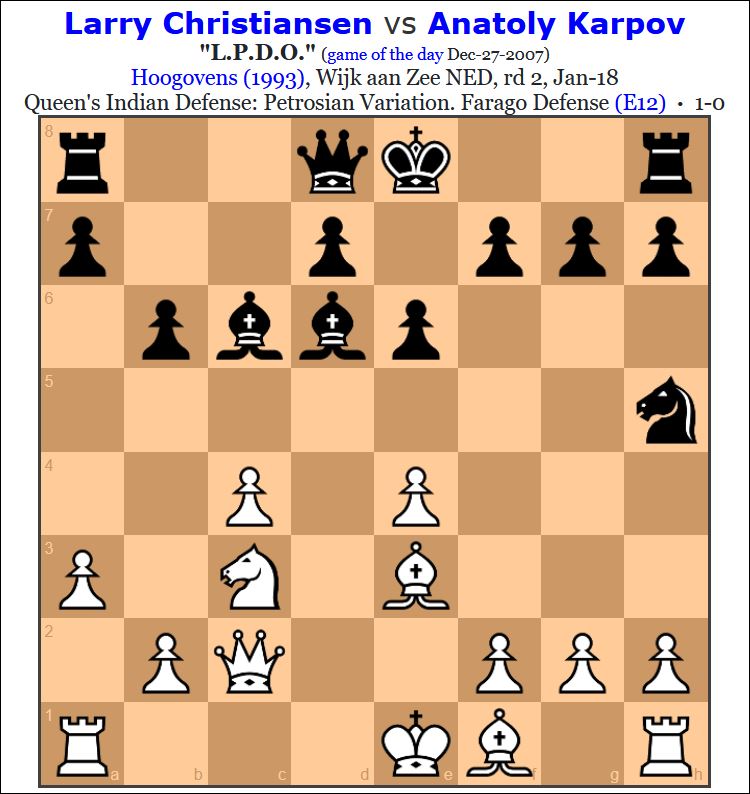
Karpov just played 11…Bd6 can you see how White won?
I’m not using the viewer because I believe one can visualize the following short game:
[Event "Hoogovens"] [Site "Wijk aan Zee NED"] [Date "1993.01.18"] [EventDate "?"] [Round "2.1"] [Result "1-0"] [White "Larry Mark Christiansen"] [Black "Karpov"] [ECO "E12"]
[PlyCount "23"]
1. d4 Nf6 2. c4 e6 3. Nf3 b6 4. a3 Ba6 5. Qc2 Bb7 6. Nc3 c5
7. e4 cxd4 8. Nxd4 Nc6 9. Nxc6 Bxc6 10. Bf4 Nh5 11. Be3 Bd6
12. Qd1 1-0
The book has a total of 33 chapters, covering all the possible tactical themes be it the zwichenzug, windmill, underpromotion, skewer, pins and so on for nearly 500 pages! And over 500 positions! The author has found very interesting positions which range from simple to bang my head against the wall at least 12 times! Each position is well explained, and the author has also explained why some positions cannot be solved by some alternative moves. I think what the book really conveys is the love for chess. Lakdawala definitely knew most or all these positions, and yet he found the energy to share them and talk about them like if it was the first time.
Pro and Con: I appreciated the fact that the author quoted all the games he took the positions from. Today one could follow this book simply by looking for each single game and watch it, like we watch a soccer game, up to the final blow. This could make the reader more aware of openings from which that tactic sprung out, or even of the preparation needed to reach that tactical moment.
On a negative note, the diagrams in the book are all oriented from White’s side, also when is Black’s turn to move.
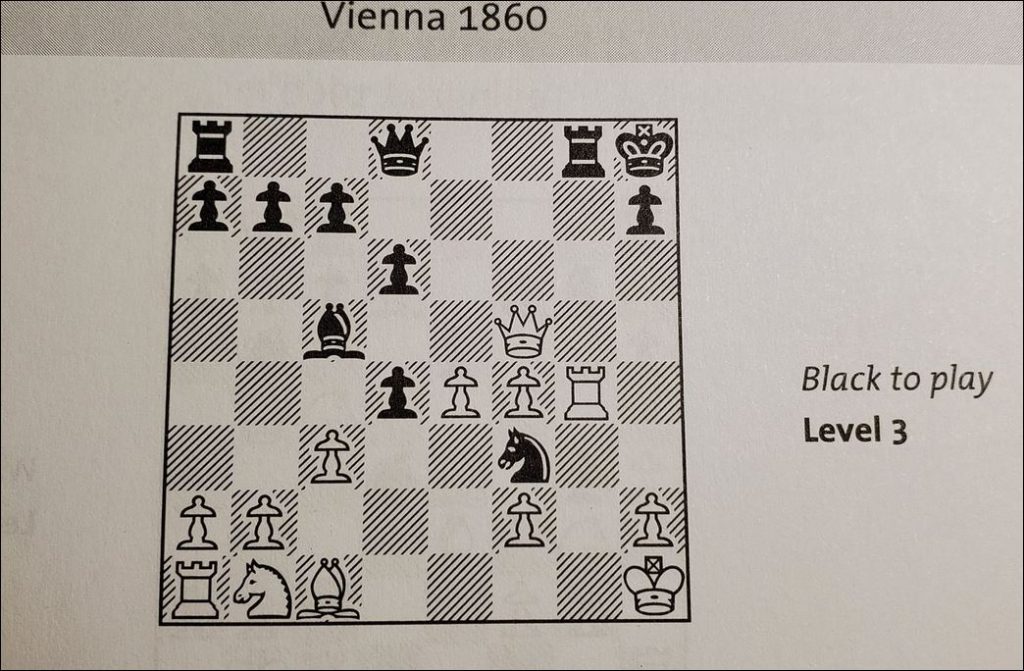
(image wrong_orientation)
Obviously it would be more meaningful for learning, to orient the diagrams from the side which is going to move, helping the chessplayer to do a visualization exercise and solve the position without putting it on the board, or just try to follow the solution in one’s own mind.
Final Thoughts: for those who have read up to this point, to see the solution to Borisenko vs Simagin here it is: 59…f5! Now White can take en passant 60.gxf6 (some beginners are not aware of the en passant rule!), Qf5 61 Kh4 Qh5 checkmate. If White doesn’t take 59…f5! 60 Kh4 Qh1 checkmate.
Solutions:
Chapter 2
Diagram 34: 18…Qg1+ 19.Rxg1 Nxh2 mate
Diagram 35: very simple mate: the idea is to move the defender of the square F2.
19…Rg1+ 20.Rxg1 Nf2 mate.
Diagram 37: 1.Qg2 Queen sacrifice/zugzwang. 1… fxg2 2. Rd6#
{a) 1… f2 2. Qxe4#
{b) 1… Kxd5 2. Qa2# In chess studies this maneuver is called a
“switchback.”
{c) 1… gxh2 2. Qg8#
{d) 1… cxd5 2. Qh3#
Chapter 3
Diagram 113 – 14. Rf8+ $1 Bxf8 15. Bg5+ Be7 (15…Ke8 16. Bf7#) 16. Bxe7+ Kxe7 17. Qf7+ Kd8 18. Qf8#
Diagram 174
Taken from the book, one can enjoy Lakdawala prose!
Henri Rinck was one of the early giants of composed endgame studies. This work of elegant simplicity took me only around six seconds to solve (when I made this claim on my Facebook feed, a 2200 rated friend declared that he solved it in 5.9 seconds!), since every move on both sides is self-evident. White forces mate in 12:
Start with the uber-obvious pin on a8. 1. Qa8
{a) 1. Kf1 {blows it since Black can play on a stalemating trick with} Rf2+ 2. Ke1 (2. Kxf2 {Stalemate.}
({b)} 1. Qd4 2 Rf2 {That annoying stalemate trick again!} 2. Qg4 (2. Qe4+ Kg1 3. Qe3 Kh1 {White is unable to make progress.}) 2… Rf1+ {Now the Mad Rook theme
kicks in!} 3. Ke2 Rf2+ 4. Ke3 Rf1 {White has no way to win.})
({c)} 1. Qh3 {Someone on my Facebook page claimed that this moves even faster than 12 moves (in other words, he believes he sees a mate that the 3700 rated engine missed!)
. The claim fails to} Rf2 2. Qh5 (2. Kxf2 {is stalemate.}) 2… Kg2 3. Qg4+
Kh1 {White is unable to make progress.}) 1… Kg1 2. Qa7+ {Step 2: Now we
begin a ladder motion to creep our queen closer and closer to Black’s king.}
Kh1 3. Qb7 (3. Kf1{No, no, no! This will fall for the dirty trick} Rf2+
4. Ke1 (4. Qxf2 {Stalemate.}) 4… Rf1+ 5. Ke2 Rf2+ 6. Ke3 Rf3+ 7. Ke4
Kg2 8. Qg7+ Kh1 {and draw.}) 3… Kg1 4. Qb6+ Kh1 5. Qc6 Kg1 6. Qc5+ {
And so on. The electoral map is clearly being gerrymandered in the ambitious
queen’s favour.} Kh1 7. Qd5 Kg1 8. Qd4+ Kh1 9. Qe4 Kg1 10. Qe3+ Kh1 11. Qf3
{For Black’s king, there is no place to breathe in this crowded tenement.}
Kg1 12. Qf1# 1-0
